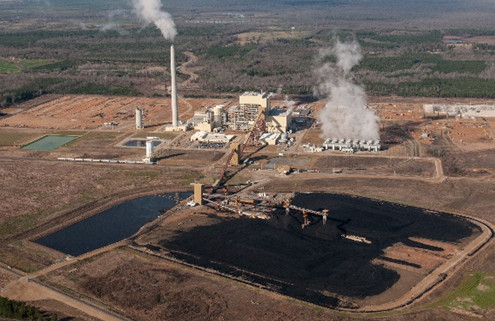EPRI Guidance Focused on Materials and Welds at the First U.S. Ultra-Supercritical Plant
Nick Akins was well aware of history—and he wanted to avoid repeating it.
In the mid-2000s, Akins and his colleagues at American Electric Power (AEP) began planning the design and construction of the $1.7 billion, 600-megawatt John W. Turk, Jr. coal plant in Fulton, Arkansas. Akins, who now is AEP’s chief executive officer, knew how important it was to avoid the usual problems coal plants face early in their operating lives. “Typically, when these plants start up, the forced outage rate is high,” said Akins.
For the Turk plant, the need was especially acute to protect against such outages. As the first ultra-supercritical plant in the United States, it would operate at temperatures above 1110°F and at a much higher efficiency than existing supercritical and subcritical coal plants with lower boiler temperatures. This would also result in lower fuel costs and substantially reduced carbon dioxide emissions.
But those benefits came with risks. High temperatures can adversely impact the durability of plant components, potentially leading to forced outages early in a plant’s career and shortening its life. “If you subject materials to stress and high temperatures over time, they can age and degrade to the point where they are no longer useful,” said Tim Riordan, AEP’s vice president, engineering services. “When you consider a plant’s materials, you have to balance how long a plant life you want and how much risk you’re willing to take. We wanted to be sure to have an asset that has a 40-year life.”
For Turk, the risks were substantial: a plant life shortened by five years as a result of component degradation could potentially mean a loss of tens of millions of dollars.

To support Turk’s reliable long-term operations, AEP collaborated with EPRI as the utility determined construction materials and maximum operating temperatures. AEP relied heavily on EPRI guidelines on materials for fossil power plants, covering topics such as fabrication of advanced steel components able to withstand higher temperatures and quality assurance steps during construction. “We used that as a basis for our plant materials and installation specifications,” said Riordan.
AEP also applied EPRI research on filler metals used to connect dissimilar metal welds. In the 1980s, EPRI had determined that thermal stress was a main cause of filler metal failure and developed a filler metal to address this. (Ultimately, it was not commercialized because it tended to crack during welding.) When Turk was being planned, EPRI returned to the task and developed EPRI P87, a filler metal that could extend the life of dissimilar metal welds subjected to extremely high plant temperatures.
P87 was used in constructing Turk, and Akins said it provided the flexibility to design the plant for efficient operations at high and varying temperatures. “EPRI’s guidelines and filler metal provided margins in the design that were necessary to manage the risk,” said Akins. “It was clearly important to have a high level of confidence in the materials.”
AEP and EPRI also addressed and mitigated the risk of exfoliation damage in advanced stainless steel superheater components. “The use of new advanced materials, steels, and alloys makes ultra-supercritical power plants possible,” said John Shingledecker, EPRI program manager for fossil materials and repair. “A big part of EPRI’s research is to improve our scientific understanding of these materials so we can ultimately provide AEP and others with the best guidance on procurement, fabrication, and long-term life management.”
Keeping a Watchful Eye During Operations
The collaboration has continued since the Turk plant began operations in late 2012. EPRI is examining material samples from Turk to determine if their performance matches expectations. AEP will use the test results as it considers when and how to perform extensive plant inspections. “EPRI’s tests look for early signs of degradation to make sure the plant is still expected to operate for its full design life,” said Riordan. “Continually looking for signs of thermal damage in the components is helping us to outline an inspection protocol for the future.”
Akins said that Turk’s performance to date has been exceptional. He considers this good news—both for AEP in meeting its load demands, and for the industry in achieving carbon dioxide emissions reductions mandated by the U.S. Environmental Protection Agency’s Clean Power Plan. “That is a big deal when you realize that this plant is 10 to 15 percent more efficient than nearly any other coal plant in the country.”


